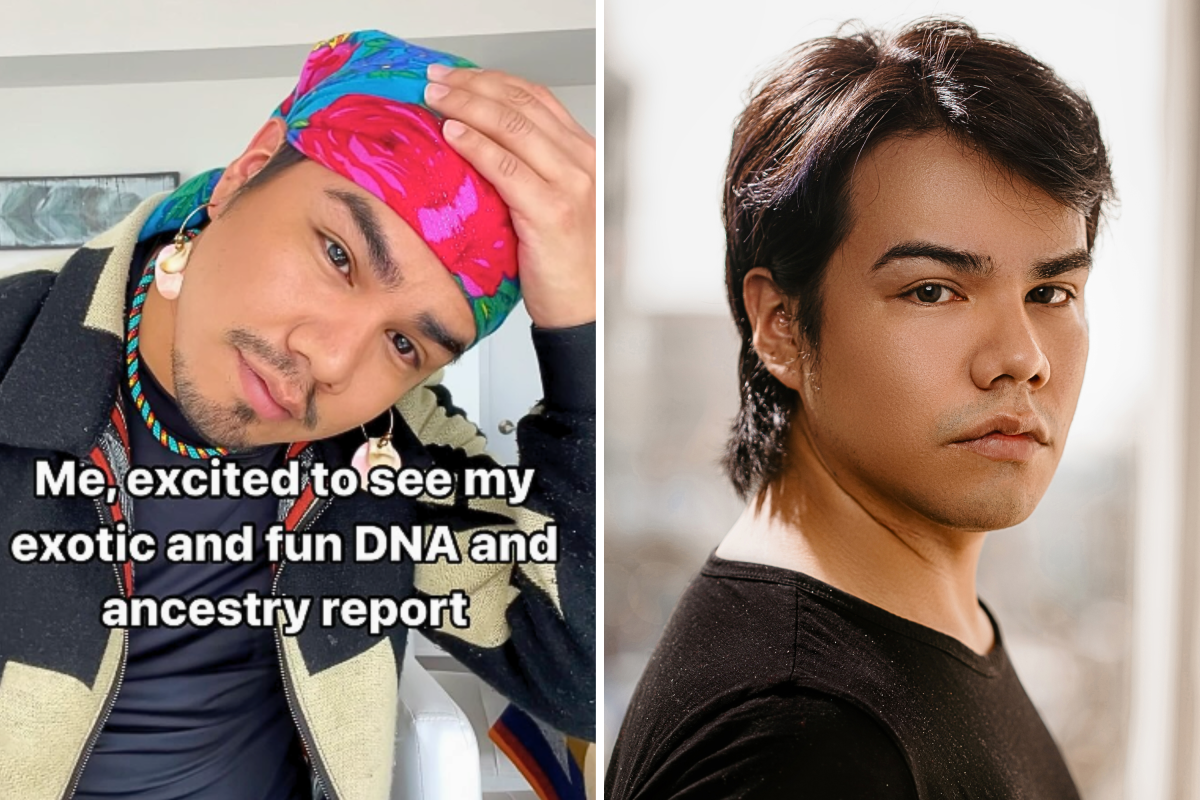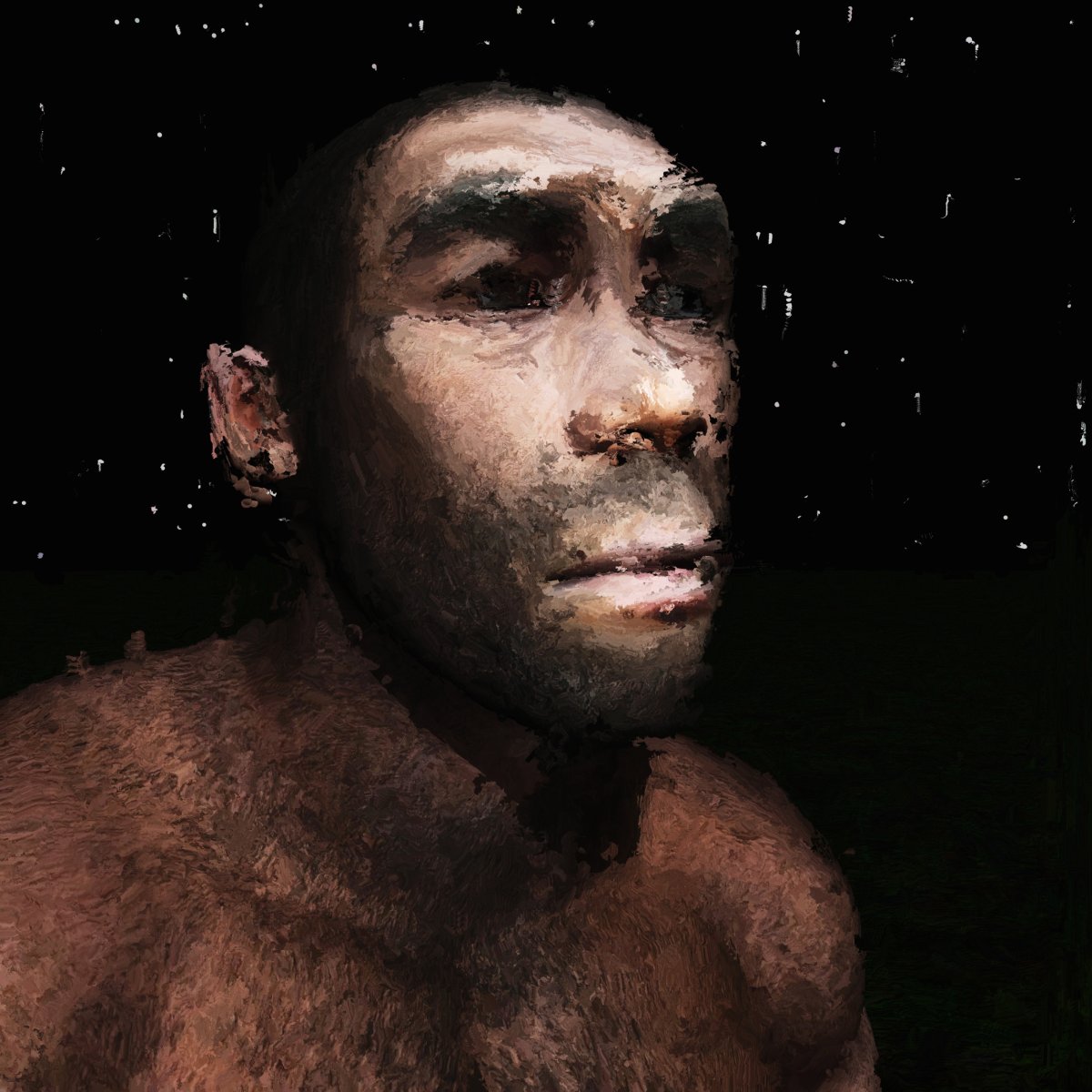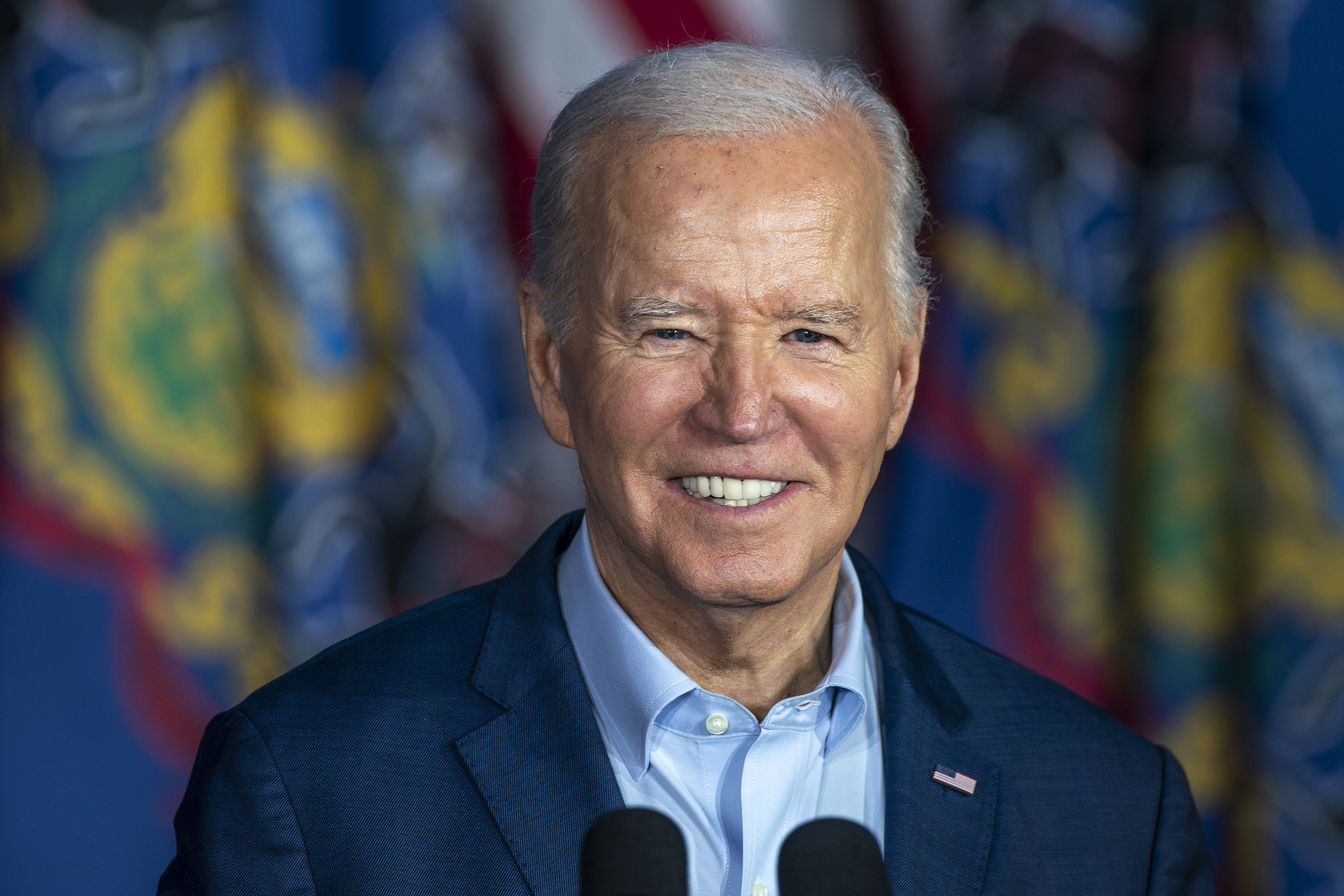In the quiet of Frog Lake in Alberta, Canada, designer and content creator Jori Waskahat decided to embark on a journey to uncover the mysteries of his ancestral lineage. Waskahat, who is an artist specializing in beadwork, knows full well about his Indigenous American heritage and frequently merges traditional Indigenous elements with contemporary aesthetics through his craft.
Still, a family rumor about a distant European ancestor got him curious and just like millions of others before him, the designer felt compelled to order an at-home DNA testing kit.
What he found was not just a link to distant European ancestors but a startling genetic connection that would make his story viral. The discovery? A genetic profile showing an astonishing amount of Neanderthal DNA, which has sparked an enlightening discussion online about human history.
"The reason I got an ancestry test was because I'd heard a rumor in my family that I had a European ancestor," Waskahat, who goes by @joribrennon on social media, told Newsweek.
"I didn't know how far back it went but I knew it was there," he said. "My partner was also curious so he purchased us ancestry DNA tests around Christmas and we sent them in and awaited our results!"
"The results did end up showing that I am 8.7 percent European," he added.
His test results also showed that he possessed 98 percent more Neanderthal DNA than the average person, as recorded in the 23andMe database—a fact he humorously highlighted in an Instagram video he made about the test.

"I was poking fun at myself because I thought it was so funny that I had 98 percent more Neanderthal genes than everyone else in 23andMe's database, and millions of people worldwide use their testing services," Waskahat said.
"I was shocked, and very intrigued, when the test results came in," he said. "In the native community we like to make fun of each other, so I knew that once I posted the video, the comments would be absolutely hilarious. But, I did not think that the reach of that video was going to be in the millions!"
The video has been viewed more than 13.7 million times since it was shared to Instagram on February 25. Viewers watched as the designer stood in a colorful outfit, his trademark personal style, while a caption read that he was "excited" to read his "exotic and fun" DNA test result. The clip then jumped, for full comedic effect, to a screengrab showing that Wakahat had more Neanderthal ancestry than the vast majority of people.
He joked: "I saw this today and let me tell you, I am not okay. Reminder to check in on your friends today. You never know what they could be going through."
Despite Wakahat having more Neanderthal ancestry than most, the video showed he still had less than 2 percent Neanderthal DNA overall.
The post's comments section quickly flooded with amusing takes on the rare result all the same.
"Bro is a living specimen," one Instagram user commented.
Another added: "You are the ancestors."
However, some users felt compelled to leave messages that Waskahat found hurtful about the validity of his Indigenous heritage, given that he'd gotten such a high level of Neanderthal DNA in the test.
"There were people giving anthropological dissertations in my comments, people arguing about my own ancestry by telling me that I wasn't native because Neanderthals were European, and there were even comments from people debating on whether or not I was an actual Neanderthal," Waskahat recounted.
"One thing that I found interesting, that I must say I just read from the comments and did no further research into, was that Neanderthals actually had slightly larger brains, created tools and music, and buried their dead, which is just fascinating to me," he said.
It is true that the average Neanderthal's brain was the same size, if not slightly larger than that of a modern human. Scientists have been able to prove this by the assessing fossilized skulls of Neanderthals.
'The Response Was Overwhelming'
As a designer, Waskahat's intricate creations have adorned stages at New York Fashion Week and on chat show The Social on the Canadian television network, CTV. They've has also been featured at the Indigenous Fashion Arts festival, yet, it was his shock DNA test results that brought such him an unexpected wave of attention.
"The response was a little overwhelming if I am being honest. I had to shut my notifications off for a while because they would not relent! It completely drowned out any other activity I had going on in the app," he said.
The designer's revelation has not only sparked numerous comments online, but has also piqued the interest of scientists studying the genetic threads that connect modern humans to their ancient predecessors.

What Is Neanderthal DNA?
Neanderthals were ancient humans who interbred with modern humans in Europe and Western Asia. Although they disappeared 40,000 years ago, some ancestry DNA tests can trace how much of an individual's lineage is tied back to these early humans, by reviewing thousands of genetic variants that are of known Neanderthal origin.
Cesar de la Fuente, a University of Pennsylvania engineering presidential assistant professor, is involved in cutting-edge research into the DNA of ancient animals, and can explain the significance of Neanderthal DNA.
"Neanderthal DNA refers to the genetic material inherited by modern humans from an ancient human species through interbreeding between the two groups," de la Fuente told Newsweek. "It provides insights into human evolution, population dynamics, and genetic adaptations, including correlations with traits such as immunity and susceptibility to diseases."
Having a "significant" amount of Neanderthal DNA, as Waskahat and many others do, points to an aspect of human history that the assistant professor says remains under-explored.
I was shocked, and very intrigued, when the test results came in.
"Results like this could imply significant interbreeding between an individual's ancestors and Neanderthals, but further research is likely needed to confirm this and understand its implications accurately. The effects of Neanderthal DNA remains a very much active area of research," de la Fuente added.
The Smithsonian Museum says that Neanderthals contributed between 1 and 4 percent of the genetic makeup of modern non-African humans. Although it was previously believed that Neanderthal lineages did not exist in African populations because of the absence of Neanderthal fossils in Africa, a 2020 study revealed Neanderthal DNA in all tested African people.
The response was a little overwhelming if I am being honest
This suggests that human migrations from Africa were not a single event but involved continuous back-and-forth gene flow, introducing Neanderthal DNA to Africa over time. The evidence of Neanderthal and modern human interbreeding challenges older theories that proposed modern humans completely replaced Neanderthals without mixing.
As scientists like de la Fuente continue to unravel the mysteries of ancient DNA and its implications for modern scientific research, stories like Waskahat's offer a more personal touch to our understanding of genetic heritage. The blend of humor and scientific curiosity in his video not only entertains but could also educate by bringing the ancient world closer to a modern, social media-driven, audience.
While the virality of Waskahat's discovery may fade—as is often the case with any kind of social media fame—the questions it raises about human ancestry will not.
Waskahat told Newsweek that aside from his Neanderthal DNA, his broader genetic makeup revealed a rich tapestry of heritage. The designer is 50 percent Indigenous to the Americas, 34 percent East and Central Asian, and 8 percent European. The rest of his lineage could not be assigned.
As we delve deeper into our genetic blueprints, we may come across more stories like Waskahat's that are waiting in the strands of our DNA, passed down through generations and ready to reveal the secrets of our ancient past and present identity.
Is there a health issue that's worrying you? Let us know via health@newsweek.com. We can ask experts for advice, and your story could be featured on Newsweek.
Uncommon Knowledge
Newsweek is committed to challenging conventional wisdom and finding connections in the search for common ground.
Newsweek is committed to challenging conventional wisdom and finding connections in the search for common ground.
About the writer
Melissa Fleur Afshar is a Newsweek Life and Trends Reporter based in London, United Kingdom.
Her current focus is on trending ... Read more
To read how Newsweek uses AI as a newsroom tool, Click here.






